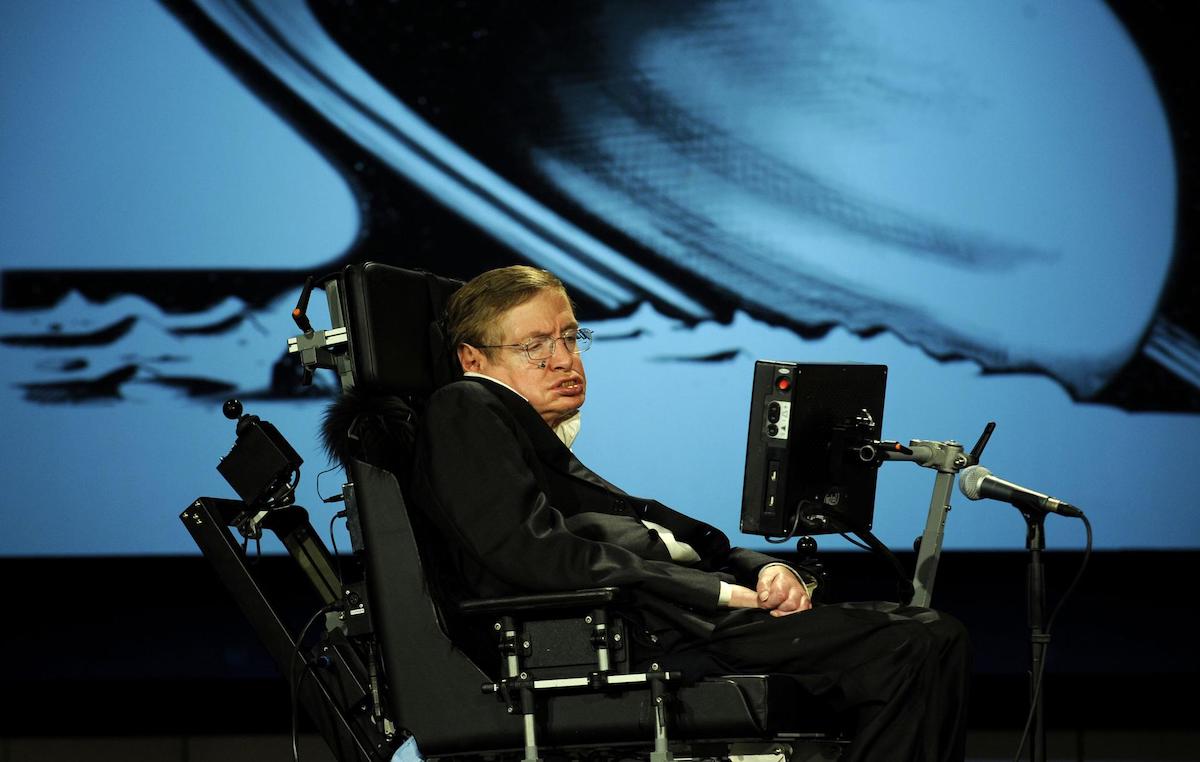Stephen Hawking’s voice, made by a man who lost his own

In 1985, Stephen Hawking had a life-saving tracheostomy that took away his natural speaking voice.
Amyotrophic lateral sclerosis (also known as ALS, Lou Gehrig’s disease, or motor neurone disease) affected his ability to move.
Hawking communicated by raising his eyebrows when someone pointed at the correct letter on a spelling card.
That changed when Walter and Ginger Woltosz, founders of Words Plus, gave Hawking a communication system called the Equalizer. The married couple had originally begun developing it for Ginger’s late mother, Lucille Evans, who had ALS.
The computer program scrolled through common phrases on a screen, and Hawking could select what he wanted to communicate with the touch of a button.
When he submitted a message, it was processed by a speech synthesizer called the Speech Plus CallText 5010. Its male voice had an American accent. The accent of Dennis H. Klatt.
The man behind the voice
Massachusetts Institute of Technology (MIT) researcher Dennis Klatt had been working on speech synthesis since the 1960s.
He developed an algorithm called KlattTalk or MITalk. This had three voices — ‘Perfect Paul’, ‘Beautiful Betty’, and ‘Kit the Kid’ — created using hours of recordings from himself, his wife, and his daughter. (You can listen to the voices on BBC Sounds.) They were first released in 1984, as part of the DECtalk speech synthesizer.
‘Perfect Paul’ would soon be used by the Speech Plus CallText 5010 synthesizer, too.
Joseph Perkell, a colleague of Dennis Klatt, told Witness History: “The first time I really understood that Stephen Hawking was going to be using Dennis Klatt’s speech synthesizer was when I heard him talk. I thought, wow, I’m watching Stephen Hawking and out comes Dennis’s voice. It was kind of startling.
“At the time, the quality of it was about as good as you could get. Compared to the other schemes that were being developed in other places, [Klatt’s] clearly sounded the best.”
A voice that lived on
Professor Stephen Hawking delivers a TED talk, 2008
While working on technology that would give Stephen Hawking a voice, Dennis Klatt was losing his own. Thyroid cancer affected his vocal cords, and he spoke with a hoarse and raspy voice in the last decade of his life, before losing the ability to speak altogether. He died in 1988.
His voice lived on.
Professor Hawking used the Speech Plus CallText 5010 until his death in 2018, despite the fact that he had been offered “upgrades”. In fact, when he needed a new synthesizer—two decades after Speech Plus went out of business—his team went to great lengths to restore ‘Perfect Paul’.
“I keep it because I have not heard a voice I like better and because I have identified with it,” Hawking said in 2006.
While many would describe Stephen Hawking’s synthetic voice as robotic-sounding, that didn’t stop him from communicating the most complex of ideas, whether he was delivering lectures at Cambridge University, conducting television interviews, or making speeches at NASA. Nor did it hold him back from conversation.
Plus, Hawking’s voice became one of the most famous and recognizable in the world. It’s little wonder that filmmakers working on his 2014 biopic, The Theory of Everything, wanted to get it right.
Screenwriter Anthony McCarten told Variety: “We spent a lot of time and money trying to reproduce the voice, but we never got it.”
Hawking was so pleased with the pre-screening that he gave permission for the filmmakers to use ‘Perfect Paul’, which was now trademarked.
Eddie Redmayne, who played Hawking in the movie, said: “With his specific voice, it’s an actor’s dream. You’re one step closer to the truth.”
The evolution of synthetic voices
Text-to-speech has come a long way since Dennis Klatt developed ‘Perfect Paul’.
Klatt engineered his speech synthesis algorithm manually. Based on the parameters of his own voice, he formed rules to shape computer-generated sounds into speech-like sounds. This technique was ground-breaking at the time.
Now, we have computer algorithms that can learn complex voice models with millions of parameters. They can also process a much larger volume and variety of human speech data. As a result, we have synthetic voices and voice clones that sound far more natural.
This has been made possible by hardware advancements, as well as the ability to offload data and processing to the cloud. The team working on Hawking’s earlier speech synthesizers were limited by the computational power of "offline" text-to-speech devices, in particular those that could fit on a wheelchair.
In the 1980s, text-to-speech was advanced enough to help one of the world’s greatest scientific minds communicate his ideas. Now, it offers a cost-effective way for all kinds of people to give their words a voice.
With BeyondWords, you can use hyper-realistic AI voices to transform your publication's written articles into engaging audio articles. Explore our website or book a demo to learn more.
Sources
https://www.hawking.org.uk/biography
https://www.bbc.co.uk/sounds/play/w3csywyd
https://web.archive.org/web/20141016003232/http://www.hawking.org.uk/the-computer.html
https://www.wired.com/2015/01/intel-gave-stephen-hawking-voice/
https://livingwithdisability.info/history-speech-synthesisers/
https://variety.com/2014/film/news/eddie-redmayne-theory-of-everything-stephen-hawking-1201340498/

